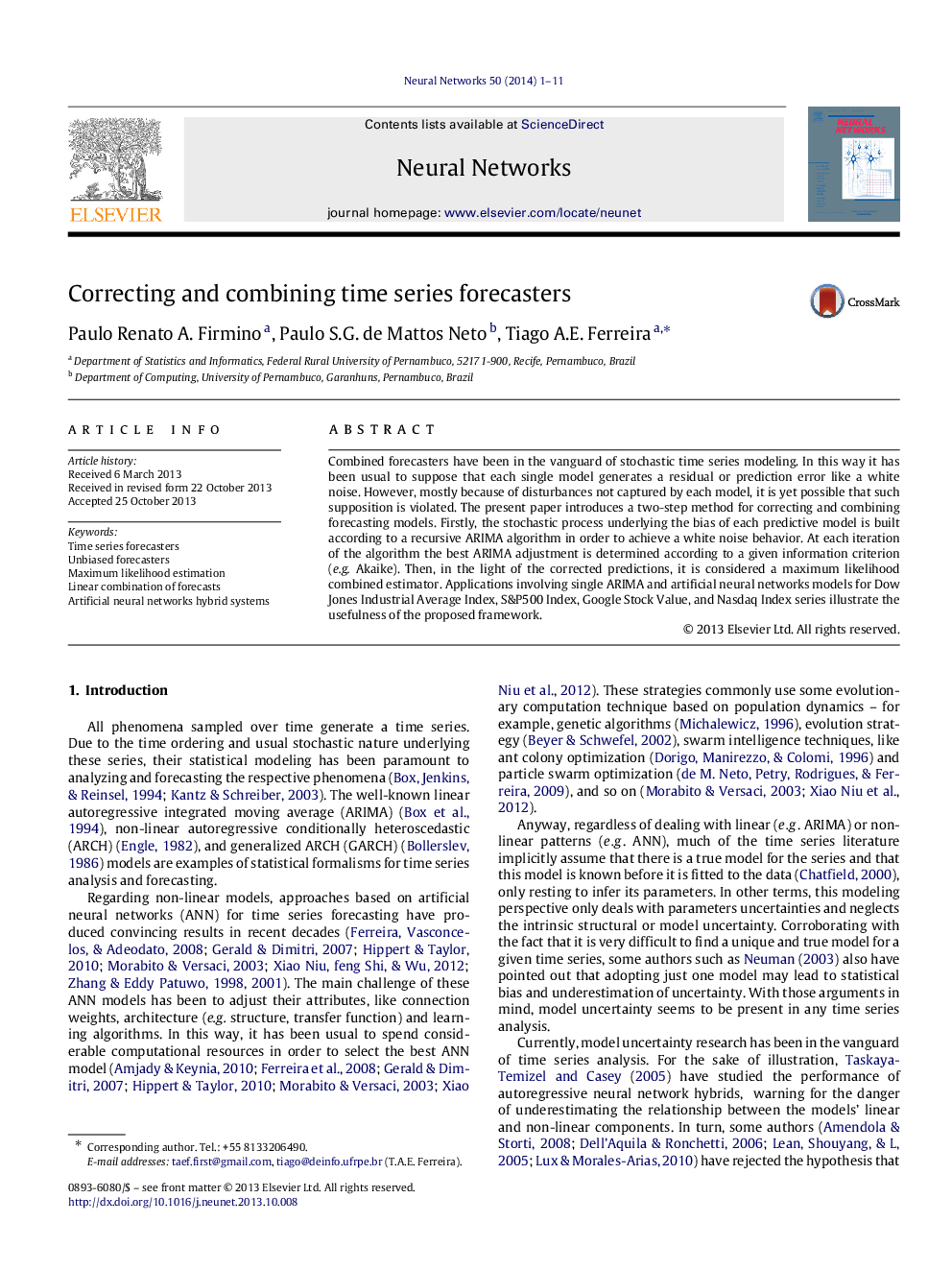| Article ID | Journal | Published Year | Pages | File Type |
|---|---|---|---|---|
| 404024 | Neural Networks | 2014 | 11 Pages |
Combined forecasters have been in the vanguard of stochastic time series modeling. In this way it has been usual to suppose that each single model generates a residual or prediction error like a white noise. However, mostly because of disturbances not captured by each model, it is yet possible that such supposition is violated. The present paper introduces a two-step method for correcting and combining forecasting models. Firstly, the stochastic process underlying the bias of each predictive model is built according to a recursive ARIMA algorithm in order to achieve a white noise behavior. At each iteration of the algorithm the best ARIMA adjustment is determined according to a given information criterion (e.g. Akaike). Then, in the light of the corrected predictions, it is considered a maximum likelihood combined estimator. Applications involving single ARIMA and artificial neural networks models for Dow Jones Industrial Average Index, S&P500 Index, Google Stock Value, and Nasdaq Index series illustrate the usefulness of the proposed framework.
